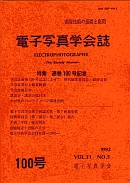Volume 29, Issue 3
Displaying 1-10 of 10 articles from this issue
- |<
- <
- 1
- >
- >|
-
1990Volume 29Issue 3 Pages 250-258
Published: 1990
Released on J-STAGE: March 14, 2008
Download PDF (1719K) -
1990Volume 29Issue 3 Pages 259-264
Published: 1990
Released on J-STAGE: March 14, 2008
Download PDF (1267K) -
1990Volume 29Issue 3 Pages 265-275
Published: 1990
Released on J-STAGE: March 14, 2008
Download PDF (1174K) -
1990Volume 29Issue 3 Pages 276-282
Published: 1990
Released on J-STAGE: March 14, 2008
Download PDF (1644K) -
1990Volume 29Issue 3 Pages 284-292
Published: 1990
Released on J-STAGE: March 14, 2008
Download PDF (3445K) -
1990Volume 29Issue 3 Pages 293-298
Published: 1990
Released on J-STAGE: March 14, 2008
Download PDF (563K) -
1990Volume 29Issue 3 Pages 299-305
Published: 1990
Released on J-STAGE: March 14, 2008
Download PDF (1024K) -
1990Volume 29Issue 3 Pages 306-314
Published: 1990
Released on J-STAGE: March 14, 2008
Download PDF (2368K) -
1990Volume 29Issue 3 Pages 315-323
Published: 1990
Released on J-STAGE: March 14, 2008
Download PDF (1842K) -
1990Volume 29Issue 3 Pages 324-329
Published: 1990
Released on J-STAGE: March 14, 2008
Download PDF (1515K)
- |<
- <
- 1
- >
- >|
